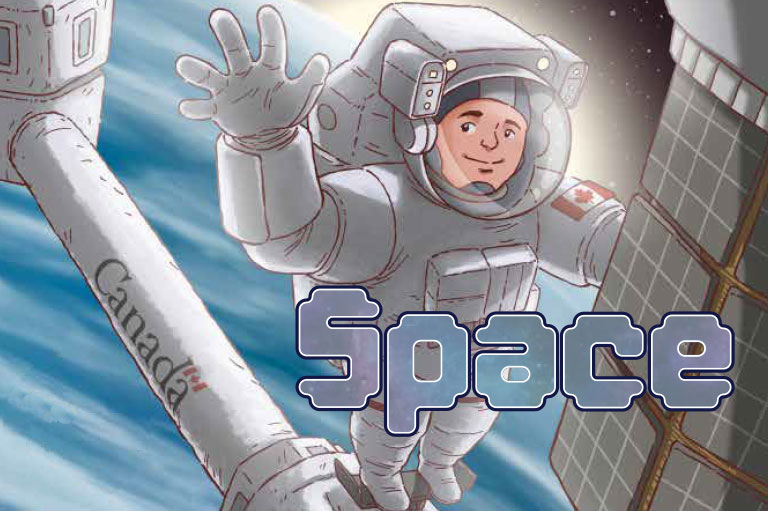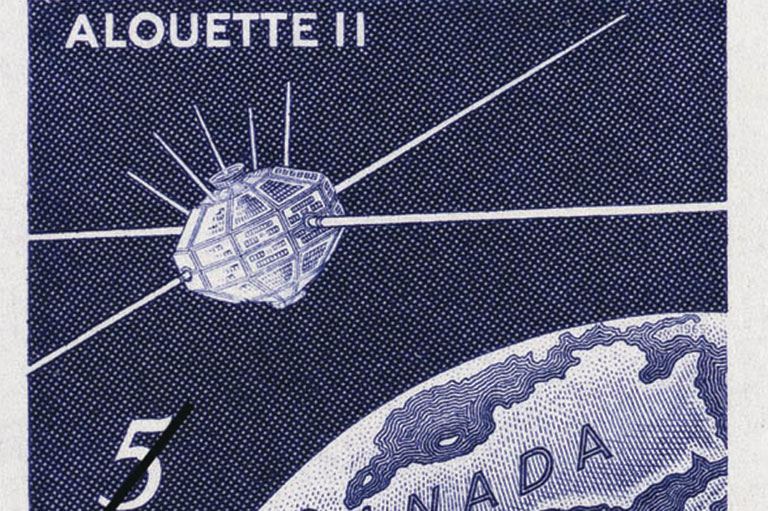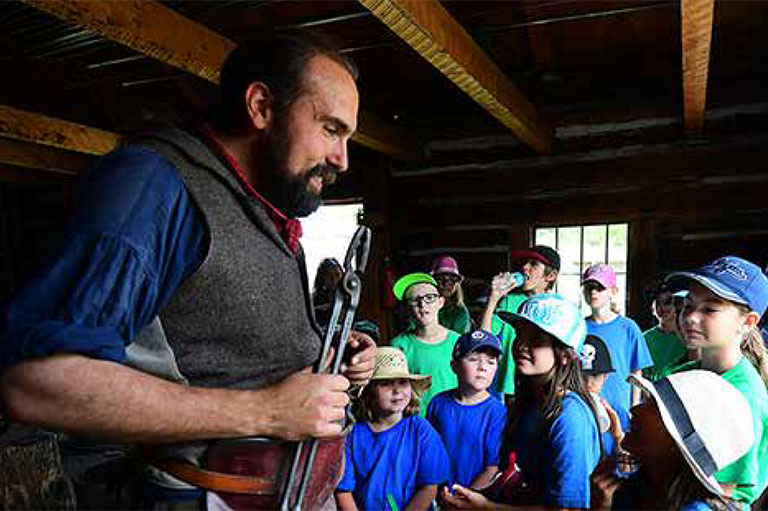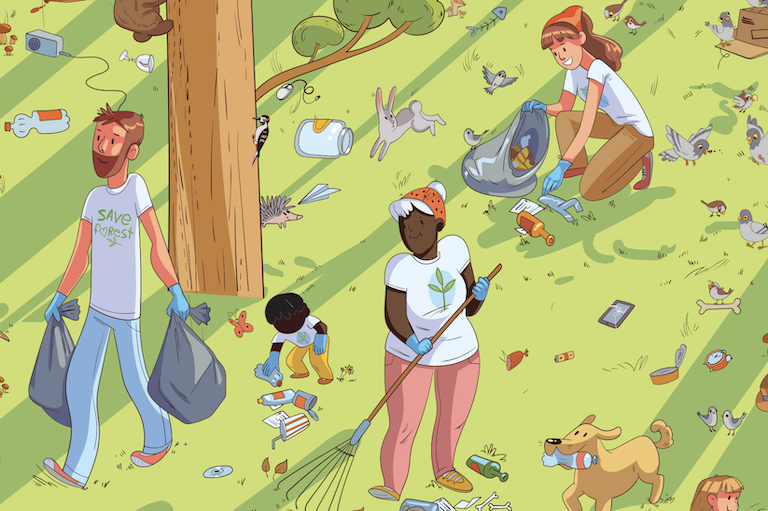Astronaut Challenge: What Would You Pack?
Grade Level: 4, 5/6, 7/8
Time Required: 1 lesson
This activity is inspired by the “Space” (November 2025) issue of Kayak: Canada’s History Magazine for Kids.
Select Curriculum Connections:BRITISH COLUMBIA | Social Studies 5: Past interactions shaping identity; influence of environment on daily life. ALBERTA | Social Studies 4: How traditions and celebrations reflect identity and culture. SASKATCHEWAN | Social Studies 6: Cultural diversity in Canada and how identity is expressed. ONTARIO | Social Studies 5: How cultural heritage and identity are preserved in Canada. |
Learning Outcomes
Students will:
- Identify how culture, community, and identity are expressed through symbols and personal choices.
- Recognize the practical challenges of life in space, including limitations on storage, weight, and daily necessities.
- Connect their own sense of identity and belonging to Canada’s role in space exploration.
Teacher Background
Astronauts often bring small but meaningful items into space that reflect their culture, identity, and community. For example, Canadian astronaut Julie Payette took maple syrup — a symbol of Canadian food culture — while Chris Hadfield took his guitar, emphasizing music and creativity as part of his identity. These choices demonstrate that even in highly technical environments, people bring symbols of who they are and where they come from.
At the same time, astronauts face significant challenges when packing for space. With very limited weight and storage capacity, and no refrigeration, they must balance practical needs with items that connect them to home. This activity encourages students to think about how personal, cultural, and national identities are expressed through objects, while also reflecting on the practical realities of life in space.
Activity
PART I — Introduction: Exploring Identity in Space
Ask your students, “If you were going to the International Space Station for six months, what would you bring from Canada to remind you of home?”
Share examples from Canadian astronauts in the past.
- Julie Payette brought a squeeze bottle of maple syrup on her space mission in 1999.
- In 2009, Robert Thirsk brought a photograph of his hockey idol Jean Béliveau who played for the Montreal Canadiens.
- Chris Hadfield brought a guitar during his 2013 mission.
- David Saint-Jacques brought an eagle feather and a miniature, handmade basket created out of wood from a black ash tree in 2018.
PART II — Discussion: Challenges of Packing for Space
As a class, discuss some of the challenges that astronauts face when packing for space:
- Limited room and weight
- No refrigeration
- Need for practicality
Record your students’ responses on the board.
PART III — Activity: Packing for Space Chart
Provide students with the handout Astronaut Challenge: What Would You Pack? There are three categories of items: personal, cultural, and practical.
Have students choose one item that they would bring to space that fits in each category. They can record or sketch their items.
Examples:
- Personal: something meaningful from family or daily life, such as a family photo.
- Cultural: something representing Canada or their community, such as a maple leaf pin.
- Practical: something useful in space, such as a toothbrush.
PART IV — Wrap-Up: Sharing and Reflecting
Invite students to share the items they would bring to space.
Ask your students, “What do your items say about you and about Canada?”
Finish the conversation with a discussion about how astronauts represent both themselves and their country while in space.
Extension
Some additional questions you could ask students to consider are:
- What’s one object in your home that would be the hardest to leave behind?
- Imagine you’re far away from your family and community — what small item would help you feel connected to them?
- What item could show someone from another country what it means to be Canadian, or part of your community?
- If an astronaut from another country saw your cultural item, what would it teach them about Canada?
- Do you think astronauts should be responsible for representing all of Canada when they go into space? Why or why not?
Themes associated with this article
Advertisement






